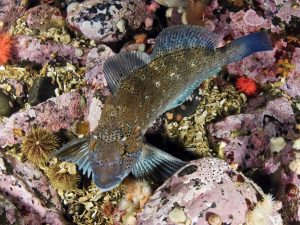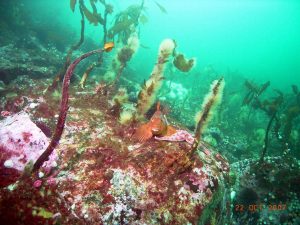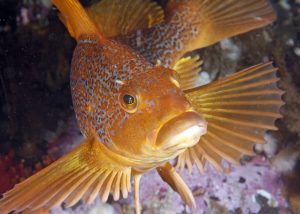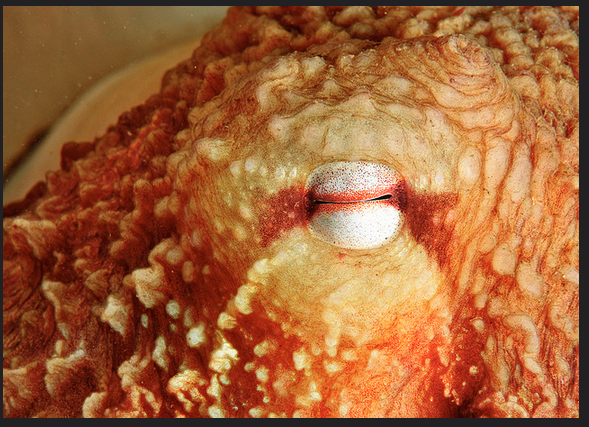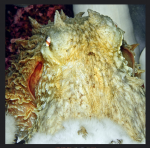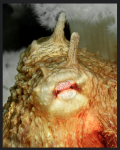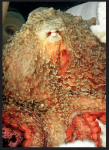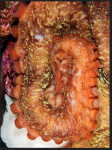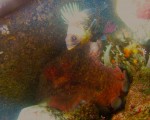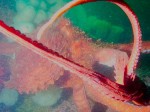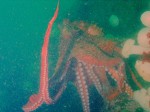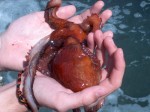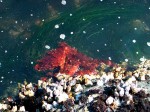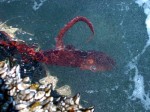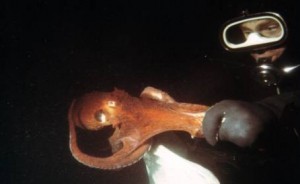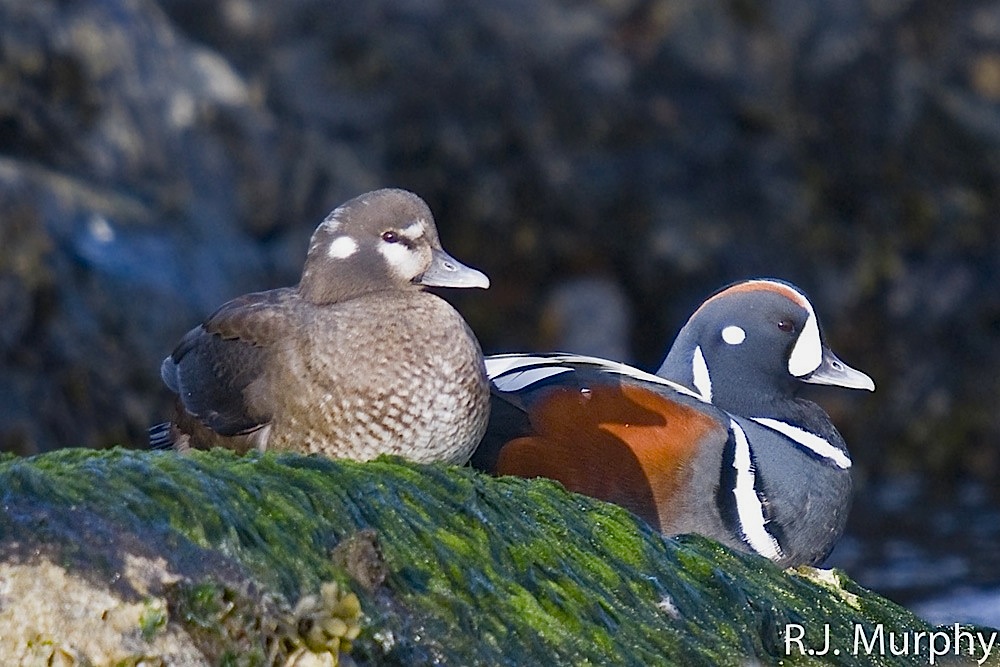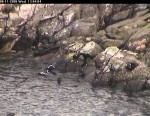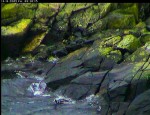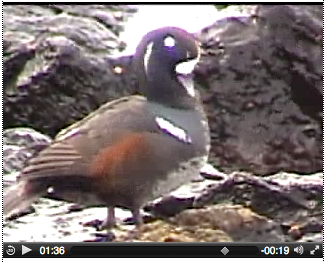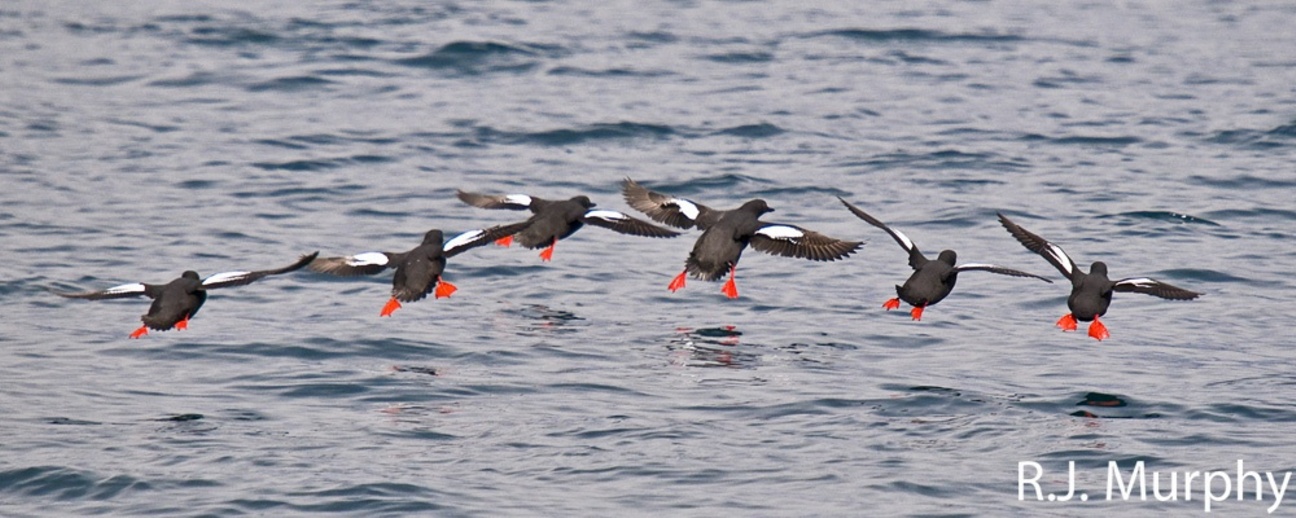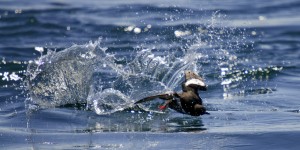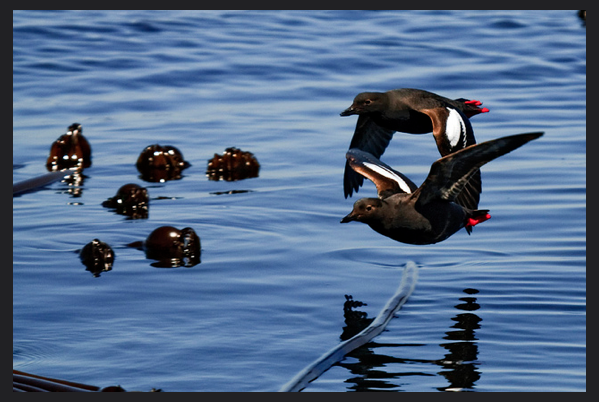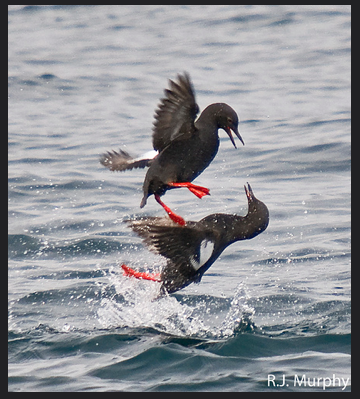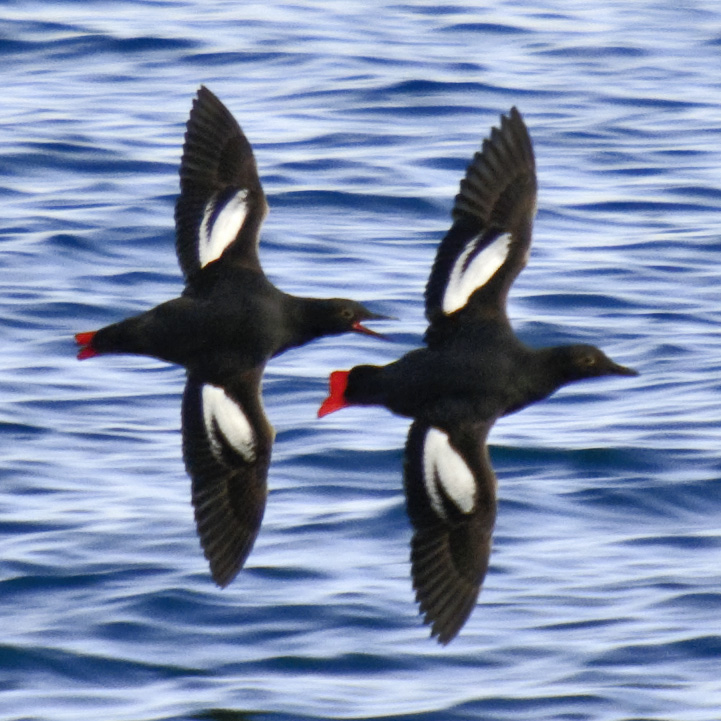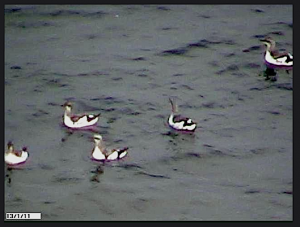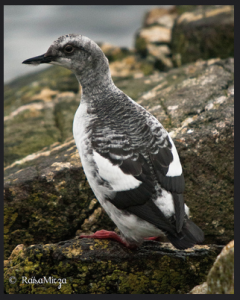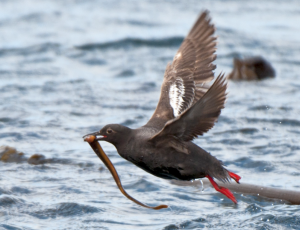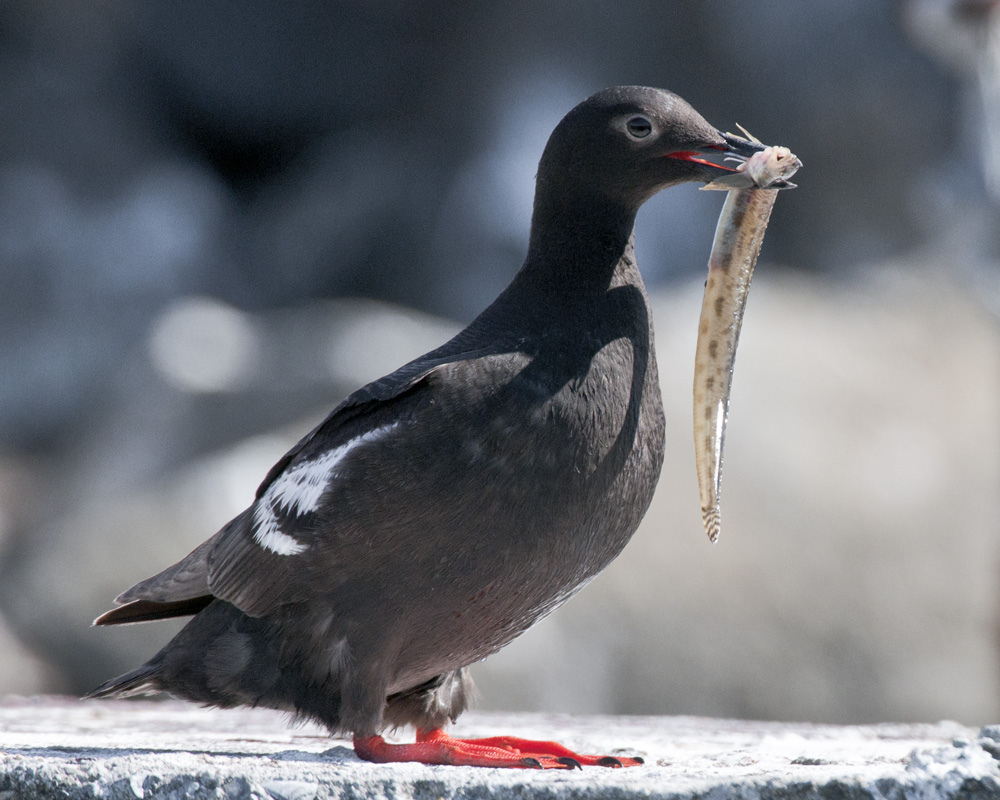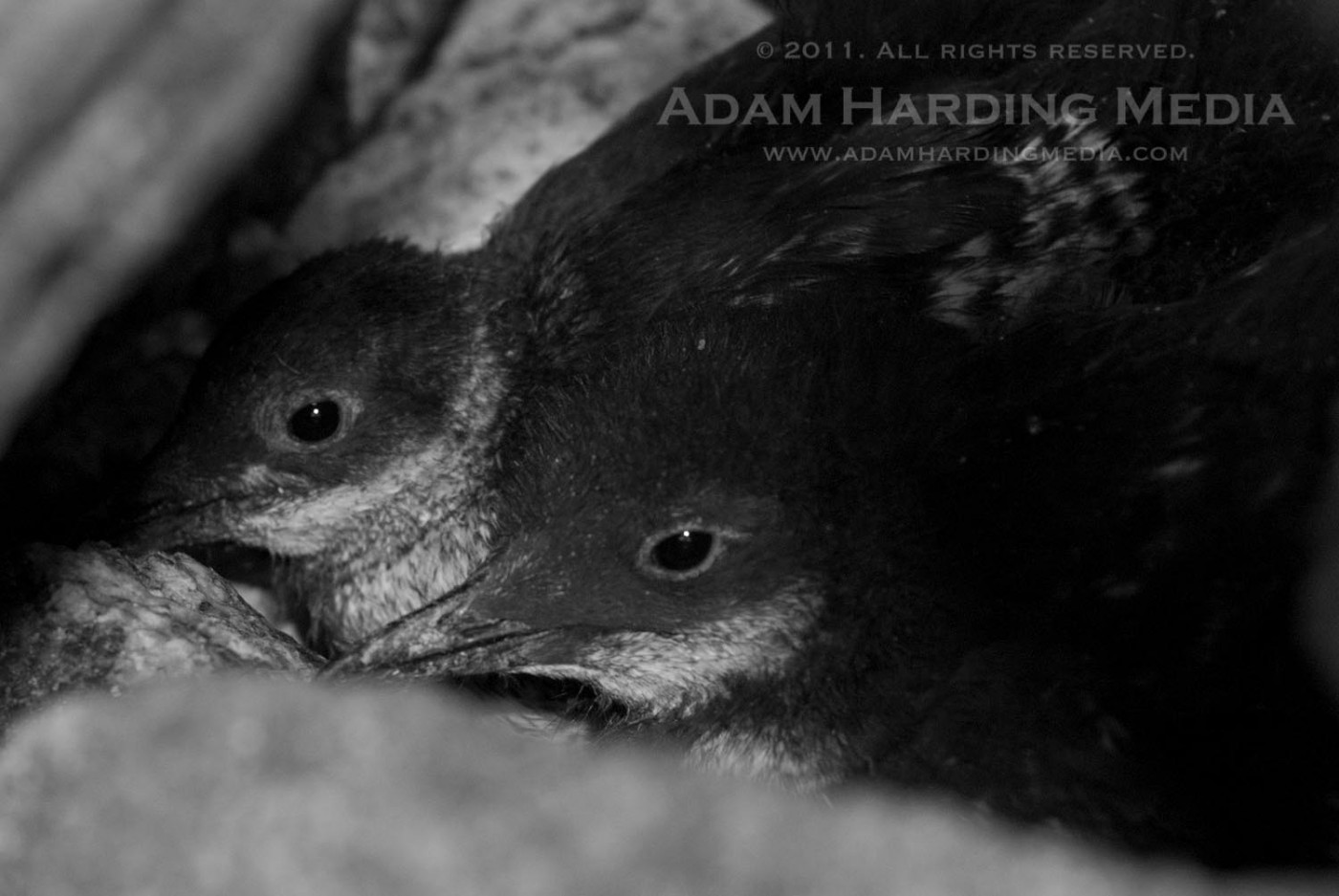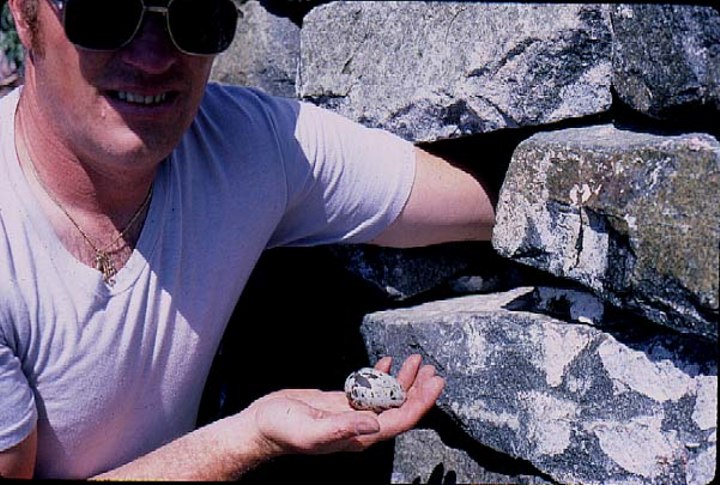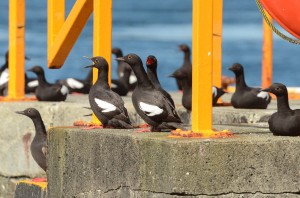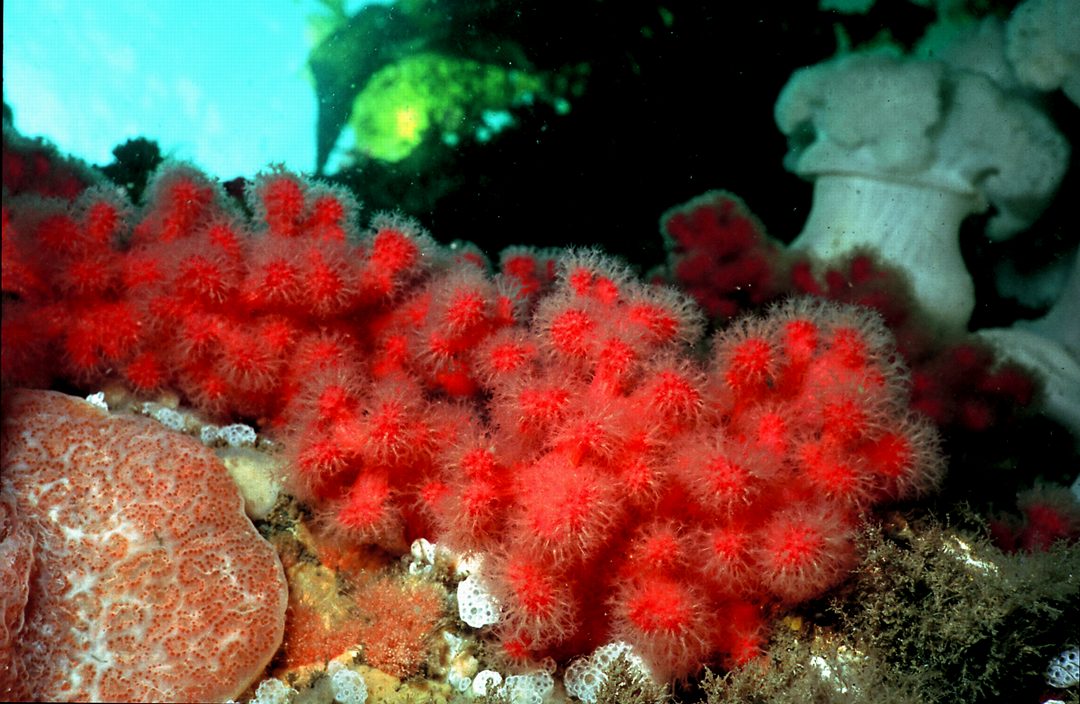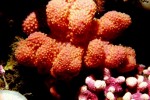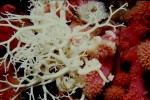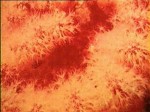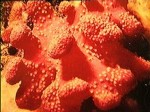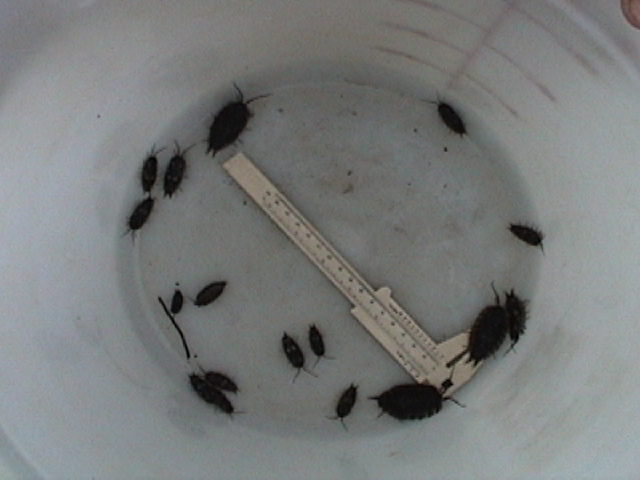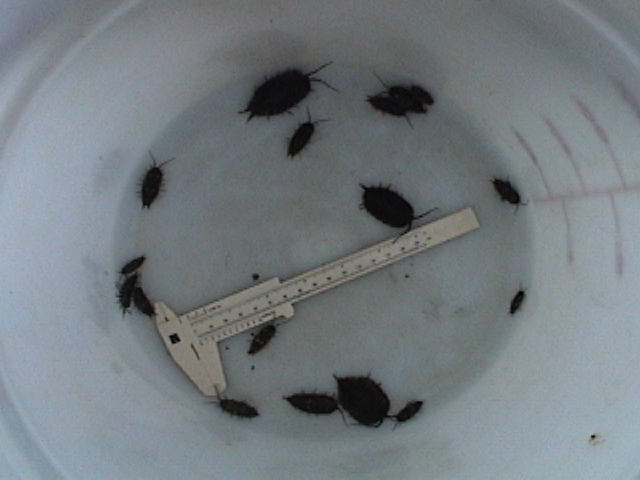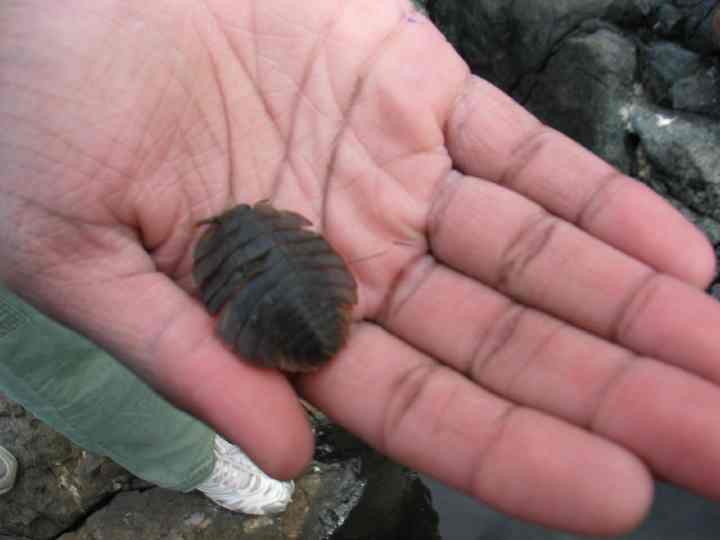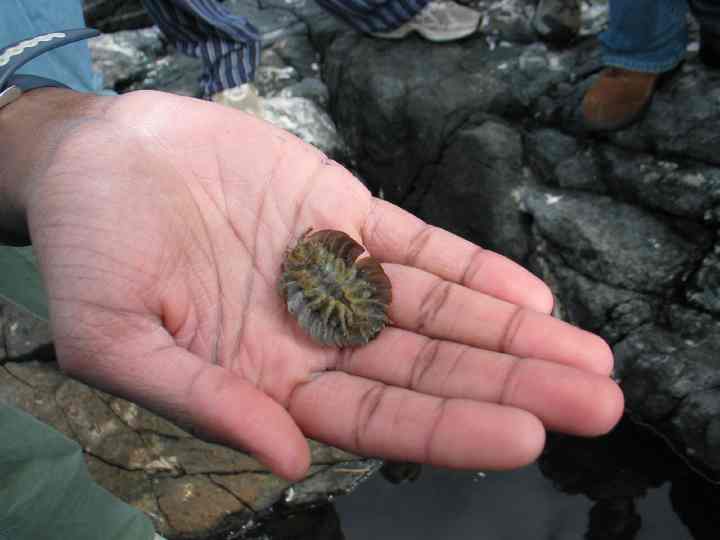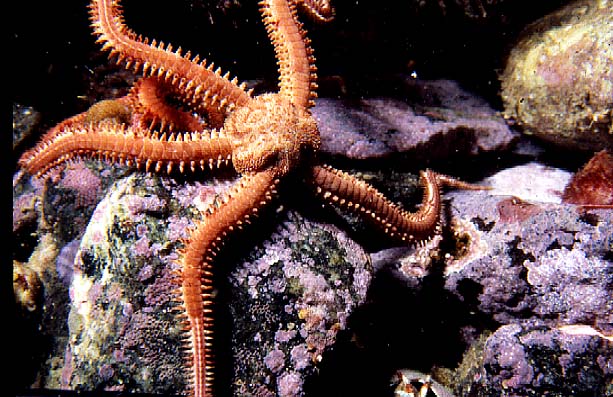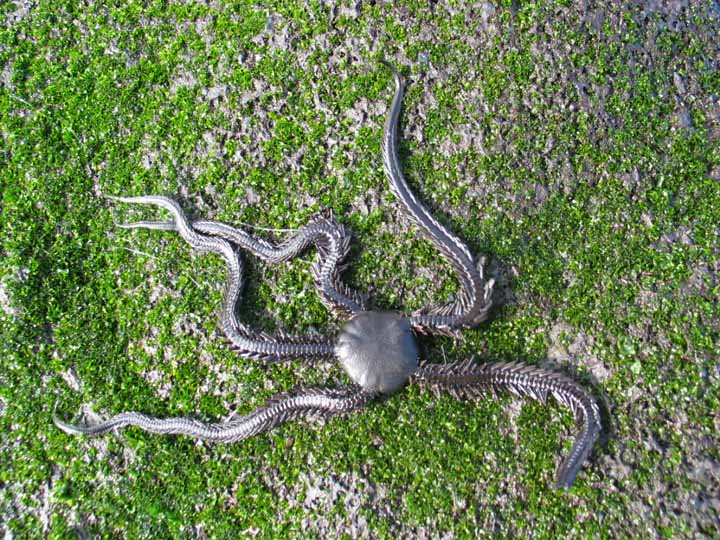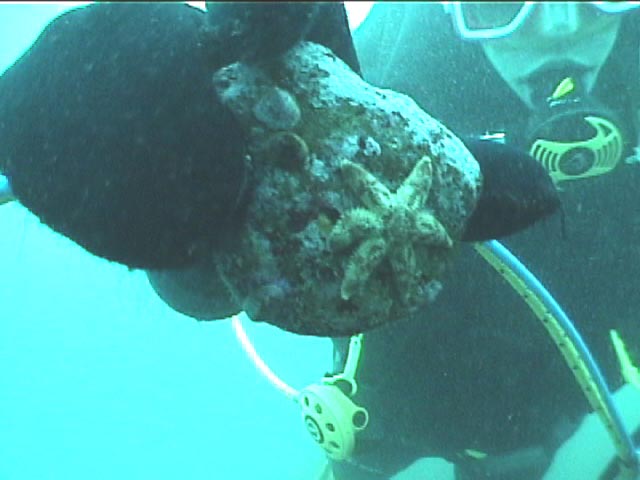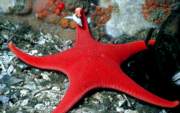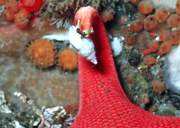Kelp Greenling (Hexagrammas decagrammus) are one of the most abundant bottom or demersal fish in the shallow benthic community at Race Rocks.
All demersal fish such as this are protected in the ecological reserve with the Rockfish Protection zone.
Domain Eukarya
Kingdom Animalia
Phylum Chordata
Subphylum Vertebrata
Class Actinopterygii
Order Scorpaeniformes
Family Hexagrammidae
Subfamily Hexagramminae
Genus Hexagrammos
Species decagrammus
COMMON NAME: greenling sea trout; speckled sea trout; tommy cod
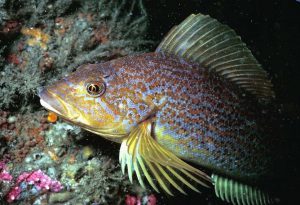 The Kelp Greenling is one of the few fish that has 5 lateral lines on each side. Males and females are sexually dimorphic, the females being a distinct orange color, while the males are bluish in color. Females are profusely covered with orange-reddish spots. Males are brown or gray in colour with a few blue spots on the front part of their body. Each of these spots is surrounded by a ring of reddish brown. We frequently see these fish dodging in under the canopy of the brown algae Pterophyga.
The Kelp Greenling is one of the few fish that has 5 lateral lines on each side. Males and females are sexually dimorphic, the females being a distinct orange color, while the males are bluish in color. Females are profusely covered with orange-reddish spots. Males are brown or gray in colour with a few blue spots on the front part of their body. Each of these spots is surrounded by a ring of reddish brown. We frequently see these fish dodging in under the canopy of the brown algae Pterophyga.
The Kelp Greenling is a rocky reef fish, found on the bottom of the ocean, often in dense macroalgae.They are abundant all along the front cliff off the docks at Race Rocks.
Between Alaska and Central California, most of them live from lower intertidal waters to about 50 feet, with females tending to live in shallower water than males.
The typical Kelp Greenling is about ten inches long, but the largest in record was 21 inches.
Females grow faster than males. Some females mature at 4 years. The greenling has been aged to 12 years, but few probably live longer.
Females are oviparous and these fish are fall spawners with nesting noted in October- November off Washington and British Columbia. Females migrate down to the males, lay their blue eggs in nests which the males guard until they hatch. Feeding occurs during the day and they are inactive at night, with their preferred menu being : shrimps, crabs, worms, octopi, brittlestars, snails and small fish.
References:
Probably more than you want to know about the fishes of the Pacific Coast, Milton Love, Really Big Press, California, 1996
Coastal Fishes of the Pacific Northwest, Andy Lamb and Phil Edgell, Harbour publishing, BC, 1986
Other members of the Class Actinopterygii at Race Rocks.
and Image File |
 The Race Rocks taxonomy is a collaborative venture originally started with the Biology and Environmental Systems students of Lester Pearson College UWC. It now also has contributions added by Faculty, Staff, Volunteers and Observers on the remote control webcams. The Race Rocks taxonomy is a collaborative venture originally started with the Biology and Environmental Systems students of Lester Pearson College UWC. It now also has contributions added by Faculty, Staff, Volunteers and Observers on the remote control webcams.Dec. 2001 Jill Scherenke Dec 2001 (PC) Germany |

